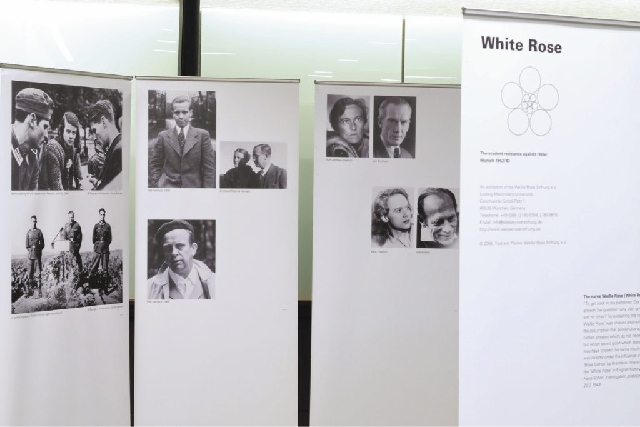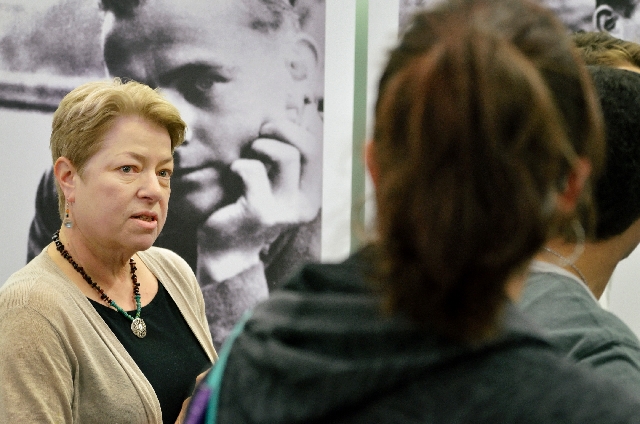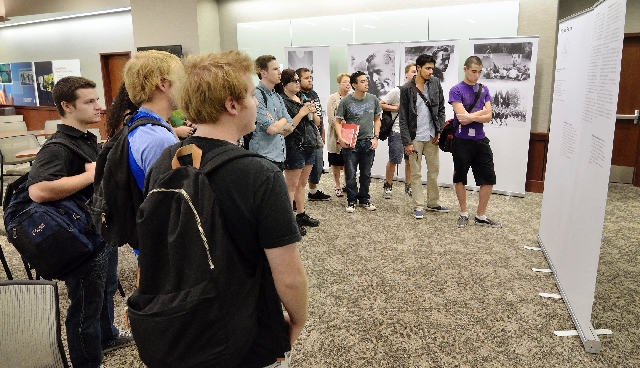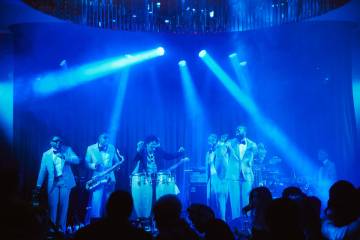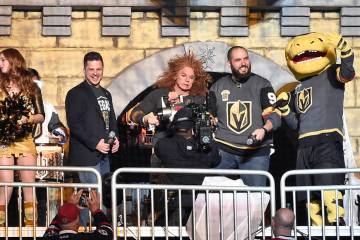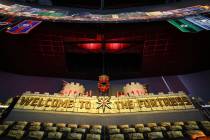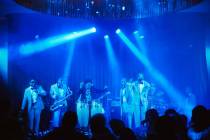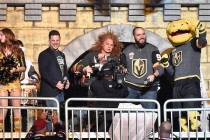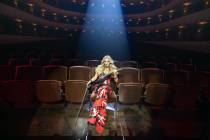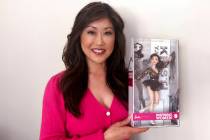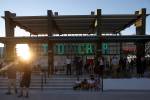Exhibit tells story of German students who spoke against Nazis, paid with their lives
They were college students who, but for geography and the era in which they lived, probably were much like many University of Nevada, Las Vegas students.
They, like many UNLV students, were young, only in their 20s, and they, probably like many UNLV students, disagreed with their government’s policies and decided to speak out against them.
And, for that, they were killed.
They were members of the White Rose, a secret organization made up mostly of University of Munich students who in late 1942 and early 1943 wrote and distributed leaflets opposing the Nazi regime and urging fellow students and fellow Germans to oppose it, too.
From Monday through Aug. 22, the sad but stirring story of White Rose will be told in “The White Rose Exhibit” at UNLV’s Lied Library. The exhibition is free and open to the public during the library’s regular hours. Sponsors are UNLV University Libraries, the German Consulate General of Los Angeles, UNLV’s Foreign Languages Department, Hillel Jewish Student Center at UNLV and the UNLV International Council.
The exhibition’s 47 panels feature text and photographs chronicling White Rose, its members and its legacy, and will reveal to students and Southern Nevadans what may be, in this country, a less familiar story of Nazi resistance.
Of course, that’s not the case in Germany, said Mary Ashcraft, a UNLV German language instructor who spearheaded bringing the exhibit here. In Germany, White Rose members are honored as “the highest form of heroes for opposing the Third Reich.”
One, Alexander Schmorell, even has been canonized as a martyr by the Russian Orthodox Church, she said.
Ashcraft has been incorporating the story of White Rose into her German language courses for about 20 years.
“I never wanted a student to leave a German course — even a semester of German — without having heard something about the Holocaust and about Germany’s role in the Holocaust,” she said.
“I originally started teaching it because I think the central questions are so deep, so interesting and so, almost, unable-to-answer, Why did the Holocaust happen? Who were the victims and who were the perpetrators?
“And, of course, I want them asking themselves: ‘Would I ever be able to put myself in a position to do the right thing in fear of sure death,’ because that is what these people did.”
White Rose began with “a very small group of friends,” Ashcraft said. One’s experiences as a member of the Hitler Youth made him question the Nazi regime, while others, who were medical students served medical duty with the German army during school breaks “and were able to see firsthand what was happening.”
With the support of their philosophy professor, the students wrote and distributed unsigned leaflets in which they urged fellow Germans to rise up against the Nazi regime in active but peaceful protest.
In their leaflets, White Rose cited philosophers and great thinkers, Ashcraft said. However, their messages also were blunt and straightforward, and even accusatory and angry.
From White Rose’s first leaflet: “It is certain that today every honest German is ashamed of his government. Who among us has any conception of the dimensions of shame that will befall us and our children when one day the veil has fallen from our eyes and the most horrible of crimes — crimes that infinitely outdistance every human measure — reach the light of day.”
White Rose called out fellow Germans for their complacency. From White Rose’s second leaflet: “Why do German people behave so apathetically in the face of all these abominable crimes, crimes so unworthy of the human race?”
White Rose even called out Hitler. From White Rose’s fourth leaflet: “Every word that comes from Hitler’s mouth is a lie. When he says peace, he means war, and when he blasphemously uses the name of the Almighty, he means the power of evil, the fallen angel, Satan. His mouth is the foul-smelling maw of Hell, and his might is at bottom accursed.”
White Rose members wrote and covertly distributed six leaflets between June 1942 and February 1943. On Feb. 18, 1943, while distributing the sixth leaflet at the University of Munich, a janitor spotted White Rose members and called police.
Within days, White Rose’s leaders were executed, while several other participants ultimately were killed, imprisoned or sent to concentration camps.
The lesson and the legacy of White Rose lies in the still-relevant question of “how can one person make a difference,” Ashcraft said. “They were six or seven in a country of, what, 80 million people. But they were just so convinced in what they were doing.”
Peter Michel, head of exhibits for UNLV Libraries, said the White Rose exhibition tells “a very, very compelling, harrowing story.” In telling a story about student activism and protest, it’s also an exhibition well-suited for UNLV’s Lied Library.
“The story does not have a happy ending,” Michel said. “So if you’re a student, you think, ‘How would I react had I been a university student in Munich in the ’40s? What would I have done?’ ”
Michel said the White Rose exhibition also introduces Lied Library as a venue for exhibits that will be of interest not just to the UNLV community but to the community at large.
The library “hasn’t really had any sort of regular program for exhibits,” Michel said. “It’s a beautiful building and a very popular public space for, obviously, students and the academic community.”
But, he added, the university library is not just for students and faculty, but also serves as “a potential resource for the entire community.”
Ashcraft hopes that, during its nearly summerlong run, “The White Rose Exhibit” will be seen, in particular, by students, noting that her own students “have always had a very emotional reaction to it.”
“I hear from kids I taught 20 years ago,” she said, who tell her that they still remember reading about White Rose in class.
“When they saw on Facebook I was going to have this coming to Las Vegas, they would write, ‘Frau, I remember when we read that book.’ It’s the last reading assignment, and they would always come into class and say, ‘We cried. We actually cried at the end of the book.’ ”
Contact reporter John Przybys at
jprzybys@reviewjournal.com or 702-383-0280.
PREVIEW
What: "The White Rose Exhibit"
When: During regular library hours, Monday through Aug. 22
Where: Lied Library on the University of Nevada, Las Vegas campus, 4505 S. Maryland Parkway
Admission: Free (For library hours, visit http://www.library.unlv.edu or call 895-2100)



